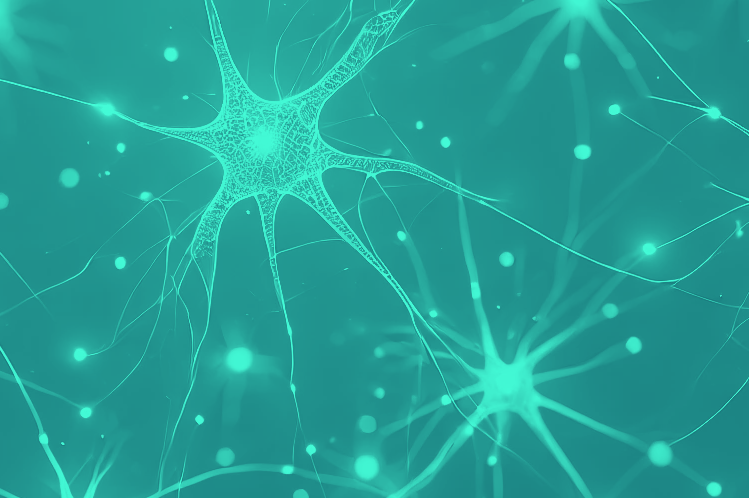Genomic Imprinting and the Brain
Biologist Catherine Dulac on the maternal-paternal genomic conflict, its influence on the growth of embryos, a...

The nervous system in living beings, from simple organisms to humans, is made up of nerve cells known as neurons. The number of neurons in a nervous system varies from 500 to 1,000 in simple worms to hundreds of billions in higher mammals, including primates and humans, who are the most intelligent creatures on Earth.
Neurons in the nervous system are organized into ensembles, complex structures with numerous connections between individual cells. In mammals, the organization of the central nervous system is understood to operate at several hierarchical levels. The highest level, or macro-level, involves organizing and self-organizing brain region dynamics to accomplish tasks such as sensory information processing, decision-making, and motor activity. The functioning of specific local brain areas is crucial for managing these activities.
These processes occur at the next level, the meso level of brain organization. At this level, large groups of neurons interact through neural connections. Sensory information processing in the cerebral cortex involves subcortical areas, requiring close coordination between these regions.
When examining the dynamics of large neuronal ensembles, we observe that the dynamics of individual neurons determine them. This presents a significant challenge in understanding brain function across all hierarchical levels. To fully grasp how the brain works, it’s crucial first to understand how a single neuron operates and interacts with its neighbouring neurons. Only then can we return to the broader level to explore how the self-organization of vast neuronal ensembles occurs to solve complex tasks.
Different research methods are employed at each hierarchical level, studying individual neurons’ dynamics. This approach is often more feasible with simpler animals. For instance, squids have large neurons that can be manipulated to measure their physical and chemical properties. However, tracking the dynamics of individual neurons within the brain becomes exceedingly difficult. Modern techniques, such as optogenetics, are now used to illuminate or stimulate specific groups or individual neurons within the optical range. However, this method is highly invasive and only allows for the study of neuron behaviour under natural conditions to a limited extent.
There are many promising ideas for studying groups of neurons in a functioning brain, but many of these concepts are still in the early stages and require further clarification. A natural next step is to conduct experiments. One such experimental approach is known as “brain on a chip.” In this method, scientists transplant individual brain cells from a mouse onto a specialized substrate in a Petri dish, allowing them to grow and live under artificial conditions. By stimulating these neurons, scientists encourage them to connect. This approach creates a model of the simplest nervous system, which can be used for experimentation. This system allows researchers to study its response to various stimuli utilizing a matrix of electrodes embedded in the Petri dish, enabling data collection on the activity of the neuron ensemble.
An alternative approach involves simulating the dynamics of neuronal ensembles on a computer. This method offers greater flexibility because, with a well-designed neuron model, we can construct complex structures and establish the necessary connections between them, thereby expanding the range of problems we can study. There are many exciting approaches in this field, but the first step is to build a neuron model. This model represents a simple cell with multiple inputs (dendrites) and a single output (axon). A single neuron can form 10,000 to 20,000 connections with other neurons. Given the brain’s immense complexity, simulating its structure remains a significant challenge. Even with the power of supercomputers, it is still impossible to fully simulate the brain of even a simple animal.
The next crucial step is creating an accurate model of the neuronal ensemble. There are two main approaches to this. The first approach involves a detailed study of the processes occurring within neurons and their connections, known as synapses. Based on this understanding, a mathematical model is constructed to describe the behaviour of such a system using specific equations. These models are biologically accurate, meaning that each variable in the model corresponds to a real parameter in a neuron, which makes them quite complex. For instance, the classic biological model of a neuron, the Hodgkin-Huxley model, is defined by four differential equations. When attempting to model large numbers of neurons in an ensemble, solving such tasks becomes a significant challenge, even for modern computers.
The second approach is to forego strict biological accuracy and instead create a model that captures the essential features of neuron behaviour. Many such models have been developed. Some of these models are not based on differential equations but discrete models that can be implemented quickly on computing hardware. This allows for the simulation of large neuronal ensembles in a much shorter time.
The primary purpose of creating models in brain research is to test hypotheses about brain function and explore the effects of variables that cannot be controlled in living organisms. By adjusting these variables within a mathematical model, researchers can gain insights that are impossible to obtain through direct experimentation. Because of this, computer simulations hold more promise than biological neuron models on a chip. However, the main limitation of this approach is that only small ensembles can currently be modeled. This raises a critical question of adequacy: How accurately can a model of 100 neurons represent the processes occurring in a single neocortex column, which contains around 10,000 neurons?
In 2005, the Blue Brain Project was launched to simulate the activity of neurons in a single neocortex column using supercomputers. This ambitious project, conducted at the École Polytechnique Fédérale de Lausanne (EPFL), involved extensive research in supercomputing. A key challenge was visualizing the vast amount of data generated — involving 5,000 to 10,000 neurons, a prime example of what is now referred to as Big Data. In this context, analyzing a single neuron becomes impractical, making it essential to understand the behaviour of the entire ensemble.
Although the project did not achieve extraordinary success, it marked an important first step toward transitioning from modeling small neuronal ensembles to simulating large groups of neurons. This type of computer modeling could become an integral part of drug testing, much like how technical objects are first modeled on a computer to study safety issues before they are physically built.

Biologist Catherine Dulac on the maternal-paternal genomic conflict, its influence on the growth of embryos, a...

Neuroscientist Sylvain Baillet on CT scanning, the way MRI works, and other techniques that revolutionized med...

On neurointerfaces, cyber prosthetics' functioning, and external actuators' control